#Temple of Apollo
Text





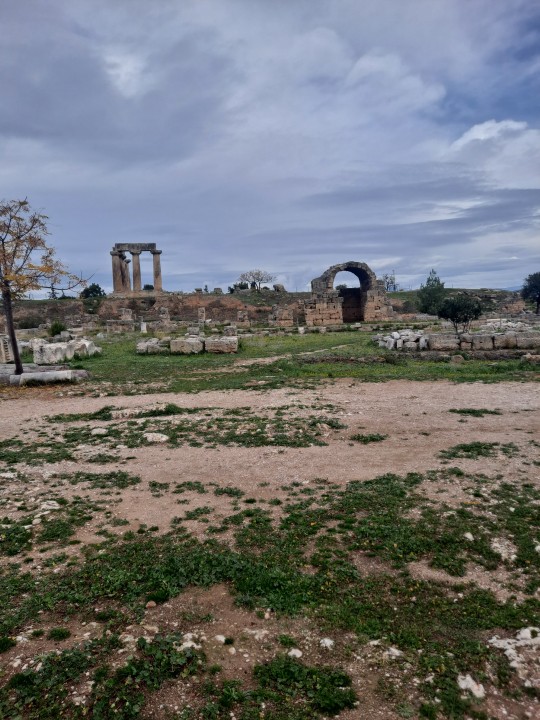
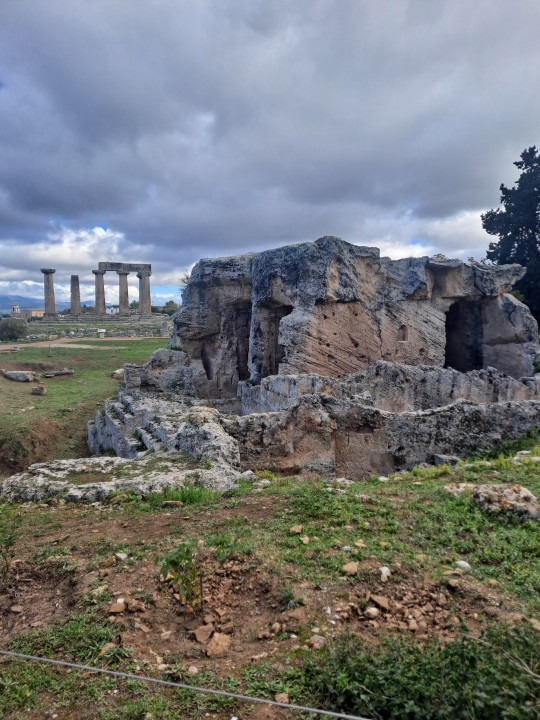
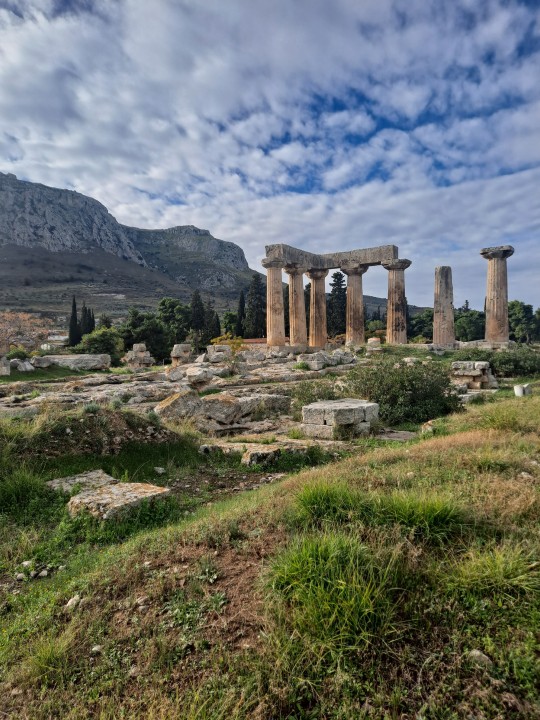
postcards from ancient corinth
1K notes
·
View notes
Photo

Portara monument (Temple of Apollo)
Naxos Island, Greece
IG: athan_andreas
#naxos#greece#cyclades#portada#greek islands#greek island#ancient greece#ancient ruins#ancient column#greek temple#apollo#travel#milky way#temple of apollo#europe#wanderlust#greek#hellas
3K notes
·
View notes
Photo
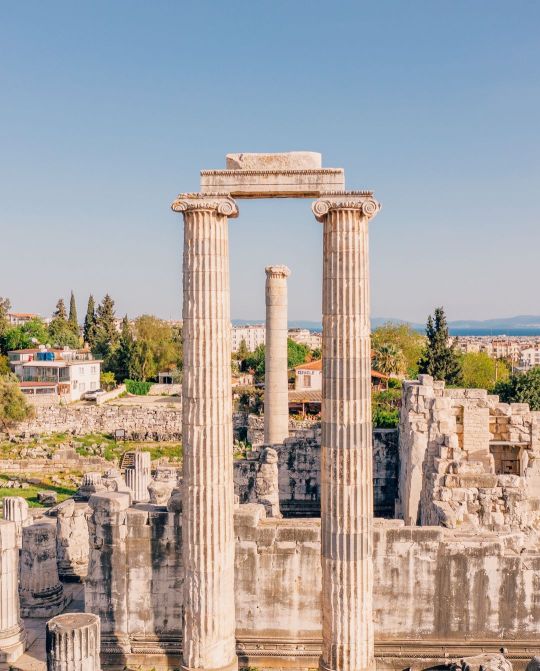

Temple of Apollo, Didyma, Turkey | go__aydin
825 notes
·
View notes
Text
Temple of Apollo, Naxos Island, Greece

#temple of apollo#naxos#naxos island#greek myth art#greek mythology#greece#apollo#ancient greek gods#greek god
2K notes
·
View notes
Text

* You're not responsible for every thought that comes in and out of your head. They're not necessarily within your control, not initially anyways.
It is within your power, however, to decide which ones you want to hold on to and those you wish to discard.
You're responsible for observing thoughts that flow inward and choosing whether or not you act on them, buy into them, or take ownership of them.
#KnowThyself
#TheWolfYouFeed
#IsTheOneThatWins
#stoicism#stoics#the stoics#western philosophy#philosophy#self improvement#know thyself#greek aphorism#delphic maxims#apollo#temple of apollo#Delphi#the wolf you feed#the wolf you feed is the one that wins#proverb#two wolves
252 notes
·
View notes
Text

Delphi
#temple of apollo#delphi greece#greece#photography#landscapephotograpy#nature#colorful#architecture#archaeological site#ancient greece#monument#hiking
124 notes
·
View notes
Text

Temple of Apollo, Didyma (Ionia)
Source; Rabe!, CC BY-SA 4.0 https://creativecommons.org/licenses/by-sa/4.0, via Wikimedia Commons
#Temple of Apollo#Didyma#Ionia#ancient#art#architecture#detail#Greek#Roman#animal#bull#temple#sanctuary#Apollo#god
255 notes
·
View notes
Photo

Temple of Apollo, Ancient Corinth by Lefterry_Bellos.
#greece#travel#wanderlust#ancient greece#flowers#spring#poppies#ancient greek temple#travelling#apollo#temple of apollo#ancient corinth#corinthia#peloponnese#peloponnisos#mainland#greek culture
301 notes
·
View notes
Text


Temple of Apollo, reverse bang 2023 with @ariesbuenos
Guys, the fic inspired by this had me in a chokehold. I’m so lucky to be paired with such a wonderful writer
💙💙💙💙
Go join the temple of Apollo on discord
#perpollo#percy jackon and the olympians#pjo#apollo x percy#percy x apollo#greek gods#pining#oblivious percy#these idiots#apollo is a simp#specifically a simp for percy#my art#divine percy#sun god#temple apollo#reverse big bang#reverse bang 2023#temple of apollo
152 notes
·
View notes
Text

Got really lucky with some early morning cloud coverage and dramatic sun rays coming over the mountain. This is a big site and I think you really need 2 days to see everything. You’re looking down at the Temple of Apollo, where the Oracle sat. I’ll share some closer pics another time, but you can see parts of the underground chamber that some scholars believe released the fumes that intoxicated the Oracle, enabling her predictions. This is the one particular site I’d love to be able to stand on, just to try to understand the layout and see those chambers better.
44 notes
·
View notes
Photo

When speaking about the Oracles of Apollo, we often just mention the most famous oracle of Delphi with its Pythia or the oracle of Phocis with the Mount Parnassus nearby. However, Apollonian cults across the Ancient Mediterranean had not one or two, but more oracles out of which some major ones are: Delphi, Didyma, Hierapolis, and more - they were scattered across Mainland Greece and Asia Minor.
The oracle of the Ancient Didyma is one of these major sites that has had just as interesting of a history of divinatory practices as any other one of Apollo’s oracles.
Oracle of Didyma, first properly mentioned in the Homeric Hymn to Apollo, is a sanctuary located in the town Didim of Ancient Anatolia, Asia Minor (current Turkey), now formally known as Yenihisar. The name of the place is of unclear origin: some researchers suggested Greek origins, seeing that dydimos means “twin” and the association with Apollo and Artemis is obvious, but Artemis’ cult of Didyma had no connections nor mirroring of that of Apollo. Others suggested Zeus as the “partner” God of Apollo at the site - but we have so far found no evidence of there being a Zeus Didymos cult at any point of Ancient cultic activity. Fontenrose suggested that the name must be Carian (Anatolian language) and go along with other Anatolian place names: Sydima, Idyma, Loryma, Kibyma, and such.
The earliest archaeological finds so far discovered at the location site date the cult back to the 8th century BCE, possibly following the Ionian conquest over these Carian lands. The earliest dated pieces of pottery found in Didyma link us back to the 14th century BCE and the Mycenean civilization. Ancient writers, such as Pausanius, claim that the oracle has operated since the 11th century BCE, long before the Ionic invasion, but we are yet to find evidence to back up that claim.
As of current, the city-sanctuary is attested to the Ionian cult of Apollo and is located around 10 kilometers South from the city of Miletus.

While the structural identity of the temple is incredibly interesting and doubles the temple at Delphi in a lot, I will only mention some peculiarities that the Didyma temple of Apollo had: a temenos (a protective wall around a sacred place), a stoas (freestanding surrounding collonade), a circular altar, a naiskos (small inner altar with a pediment), a chresmographeion (office of the oracle), and a sacred well preceding the temple.
Interestingly enough, the temple of Apollo at Didyma, as many scholars agree, was likely built with the aim to create an underground adyton, or inner shrine. Archaeological research and astronomical events observed at the site show that the sanctuary, built slightly differently from other Apollonian oracles in terms of its stellar orientation, was probably meant to face the rising of the constellation of Lyra.
It is possible that the temple was unroofed in both Archaic and Hellenistic age, when the building went through major rebuilding. Interestingly enough, the site of Didyma had musical and drama contests held annually but lacked a theater or an odeion.

The oracle of Didyma, though at first one of the two most popular oracular sites in Asia Minor, has seemingly gone through a decline after the destruction of the temple by Persians in the 5th century BCE. It has been through an uprising in the Hellenistic era with a following decline as Christianity spread, rendering the temple and the oracle unused as late as 3rd century AD.
Unfortunately, the information on the divinatory practices at the site of Didyma is not as well preserved as the information at other sites, such as the oracle of Delphi. We do know that the temple had a priest or a priestess to deliver versed prophecies - the gender of the deliverer of prophecies, through, is unknown.
Generally, there are two main types of divination that have been attested as used at the Didyma temple: mantic trance and cleromancy

We do not know enough to state anything on the divinatory process involving mantic trance at the site during the Archaic age, as all evidence so far has been inconclusive. However, there are surviving inscriptions and writings that show the form of divinatory delivery as used at the site in the post-Archaic period, after the renown revival of the temple by Alexander the Great. The oracle, whether a man or a woman, delivered the prophecies likely directly in form of a dactylic hexameter. Some researches supposed that every Apollonian oracle worked this way, though we do know that some of them were specific about the gender of the oracle - not Didyma.
Perhaps the latter has something to do with the legendary hoi Branchidae, priests tending to the temple of Apollo at Didyma; said to root from Branchus, the God’s old lover.
The oracle of Delphi, a site that, according to geological investigations, likely did have a chasm under the bedrock that could indeed leak vapors into the room of the temple, is different from the oracle at Didyma as the Anatolian temple lacks same volcanic geology. It is thus unclear if the oracle of Didyma fell into mantic trance as it is at all or perhaps used different methods of entering it.
In fact, it is still unclear whether the very concept of a mantic trance was that prevailing over other divinatory types. The requests for the Pythia were, for example, so constant that other types of divinatory practices were constantly used at Delphi. As for Didyma, there is another divinatory method that researchers have so far found evidence of being used.

Astragali, the animal bone knucklebones, have been found across all divinatory centers of the Ancient world. Traditionally made out of bones of ugulates (pigs, sheep, goats, etc.) those lots had numerical significance as they were split into named groups and attested numbers each. It is unclear why specific animals only were used for making astragali, though there’s been stastical research that showed certain bones of certain animals, when shaped correctly, gives better, more equal results when thrown as dice.
As a divinatory tool, astragali possessed a degree of uncertainty to them as they could be modified to change the outcome of the draw; however, some researchers state it was believed that the seemingly random outcome of the draw ensured the diviner bears no influence on the outcome of said draw.
Astragali are sometimes believed to be secondary to oracular advice, and this assumption is based on a few factors. Seeking out oracular help included involving oneself into an expensive and time-consuming procedure that included sacrificing a whole sheep or goat, buying a honey cake for an offering, and going through an extensive consultation; that, combined with how rarely oracles of Delphi, Didyma, and other sites spoke added on to the subjective higher validity of the process, though there’s no proof one way of divination had an actual “better” effect on the results received than the other.
Ancient Anatolia has known divination by what later was called astragali from as long ago as the Copper Age (5,000 - 3,000 BCE) with prominence in the Anatolian city of Alisar, modern Turkey. Middle Bronze Age (2,100 - 1,550 BCE) and Late Bronze Age (1,550 - 1,200 BCE) dated finds of astrogali near Aphrodisias, Turkey, and Beycesultan neared the location of Didyma, pointing out the possible usage of the knucklebones at the site, too. Local Hittites have used astragali as oracular devices since the 14th century BCE, and the tradition seemed to continue on until it changed somewhere between Bronze and Iron age.
The Archaic finds in Ancient Anatolia point out that the usage of astragali has been quite consistent both in the temple to Apollo and the temple to Artemis in Ephesus alongside its use in different local sancturies. The knucklebones found were made out of wood, bones, and sometimes glass - inscribed, clear, and modified alike. Most of the astragali found at the site of Didyma were modified by lead, thus heavy, and had inscriptions on them that point out that the knucklebones bore messages to the inquirer.

One of the most fascinating parts about the history of divination at the site of Archaic Didyma is that the delivery of responses from the Deity was, apparently, direct - not a very common happening across the Greek Apollonian temples. Usually, the delivery would be done through a medium though inscriptions from Didyma use third (”the God said...) and first (”I said...”) person to describe messages given by, apparently, Apollo. Herodotus marks an event where the men of Kyme asked the oracle for advice and, after receiving a dissatisfactory reply, have continued to ask across other oracles of the region, eventually growing angry and disturbing the birds nesting in the walls of one of the temples. That, according to the historian, angered the God enough to speak to the intruders directly and request to never come back. Whether true or not, this does show that at Didyma, the belief persisted that Apollo could deliver messages personally and directly.
Another inscription found at Didyma also points out that the God spoke to the prophet directly; Delphic and Lebadeian oracles occasionally spoke spontaneous utterances directly to the oracles, too. However, the incident of a God speaking to a mortal directly is still a rarity in Ancient Greek worldview.
Sources and further reading: 🏺 🏺 🏺 🏺
#HISTORIA 📔#ancient anatolia#ancient greece#ancient history#ionian greece#cult of apollo#temple of apollo#oracle of apollo#apollo#divination
97 notes
·
View notes
Text

"I love you, most ardently."
(c) wordyelaine (instagram)
#pride and prejudice#mr darcy#fitzwilliam darcy#jane austen#mr. darcy#prideandprejudice#prideandprejudice2005#stourhead#first proposal#keira knightley#matthew macfadyen#temple of apollo
120 notes
·
View notes
Photo
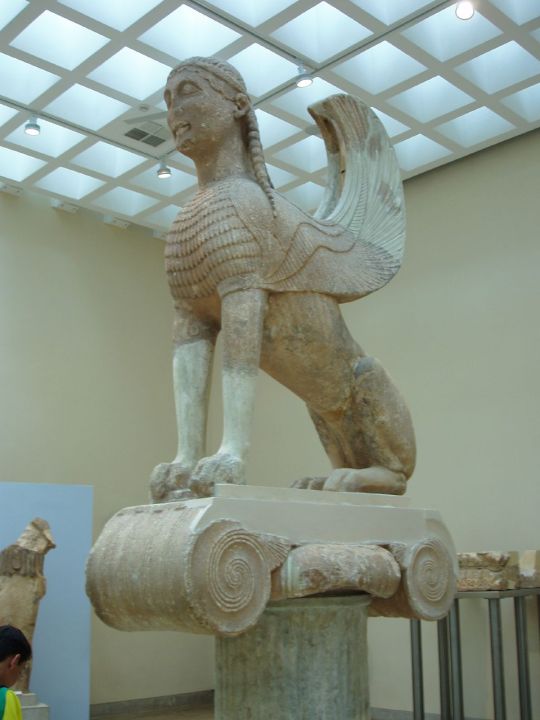
Today’s Flickr photo with the most hits: the Naxian Sphinx, in the Archaeological Museum in Delphi.
The sphinx stands over 2 metres high. It was originally set up on a stele around 560 BC as an offering to the Temple of Apollo by Naxos, one of the richest Cycladic islands at the time. The overall height of the statue, the column and its base topped 12.5 metres. Note, too, the Ionic capital - one of the earliest.
58 notes
·
View notes
Photo
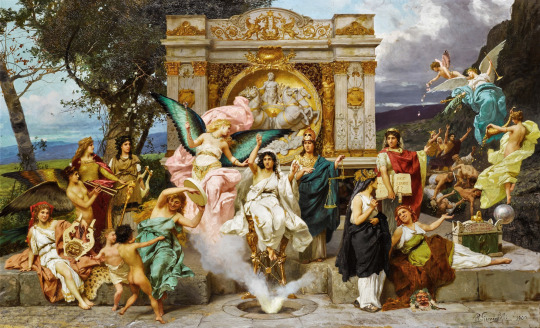
Henryk Siemiradzki (Polish, 1843 - 1902)
Parnassus, 1900
Kept in the same family for over a century and never shown in public, Henryk Siemiradzki’s Parnassus is an exciting rediscovery for collectors and art historians alike. It is a version, reduced in size, of the artist’s last great work, and one of his most celebrated, the curtain of the Opera House in Lviv.
Drawing heavily on classical allegories, Parnassus is a monumental representation of creativity and the arts. At the centre of the composition is the Pythia, the high priestess of the Temple of Apollo at Delphi, who represents inspiration. She is flanked by a winged figure representing imagination on the left, and Minerva holding scales representing wisdom on the right. In the background, we see the Temple of Apollo with a relief featuring the God of music, dance and poetry. The three main elements of artistic creation are repeated more explicitly in the marble cartouches with the inscriptions Intuitio, Phantasia, Sapientia, (inspiration, imagination, wisdom).
On the left, we find allegorical representations of dance, poetry and music, the latter in the form of a Siren, half-woman, half-bird. On the right, History is holding a book with the inscription Sic fuit, sic est, erit semper? (Thus it was, thus it is, thus shall it always be?). She is looking at Comedy and Tragedy and is pointing to Wealth, Fame and Love, who are set against a backdrop of violence.
#Henryk Siemiradzki#Henryk Hektor Siemiradzki#Parnassus#art#fine art#fine arts#art history#art study#classical art#european art#polish art#allegorical art#oil painting#poland#european#western civilization#temple of apollo#greek mythology#mediterranean#europe
44 notes
·
View notes
Text

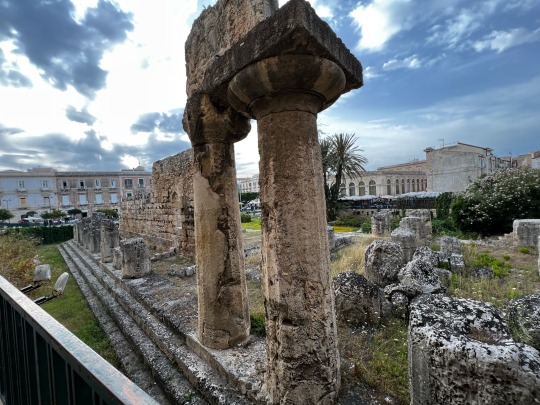
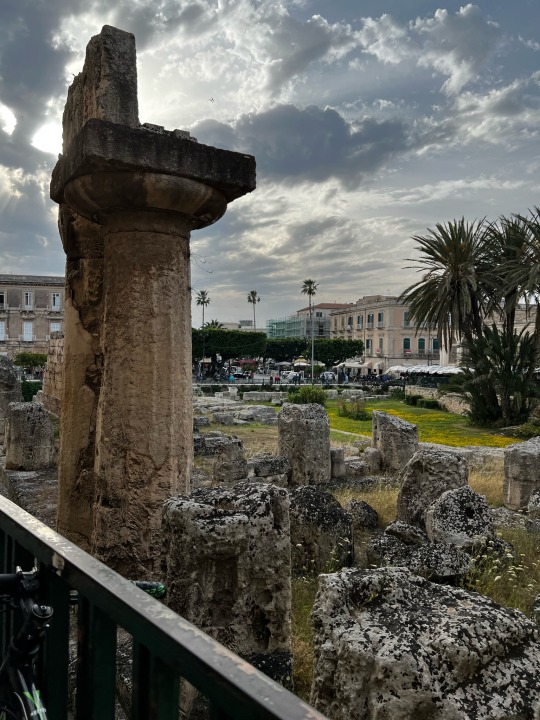
I got to visit the temple of Apollo in Siracusa yesterday and it was incredible!
Here are some of the photos that I took 🤍
5 notes
·
View notes
Text

Bassae frieze (6)
* Temple of Apollo at Bassae
* 420-400 BCE
* British Museum
London, July 2022
#Bassae Frieze#5th century BCE#Temple of Apollo#amazonomachy#ancient#Greek#art#mythology#frieze#amazon#clothing#Bassae#my photo#British Museum
42 notes
·
View notes